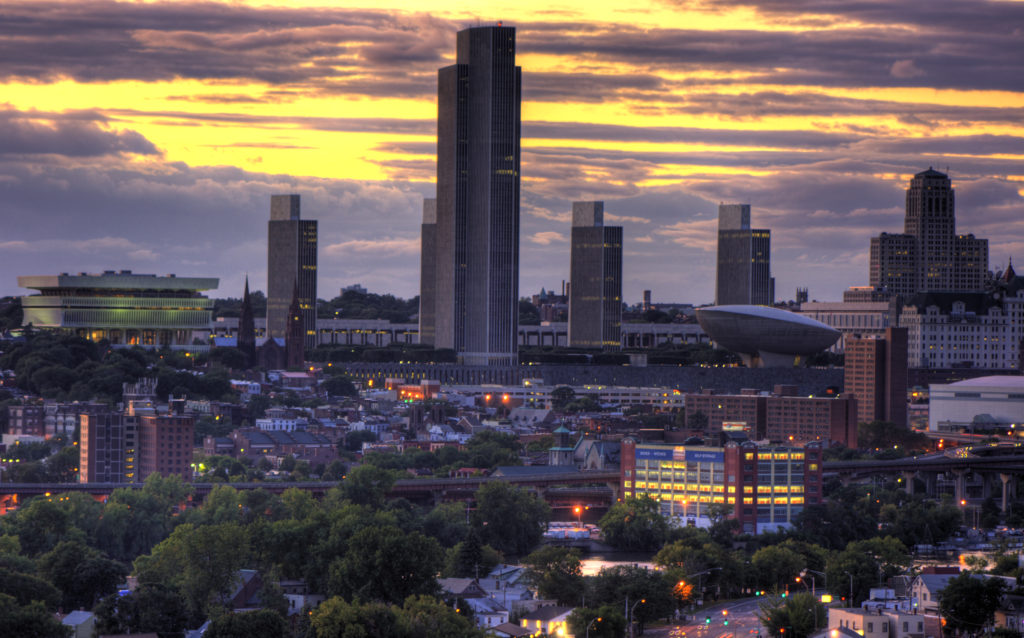New York
Why Invest in Real Estate in New York?
The biggest single industry in the region now is healthcare, growing twice as fast as finance, but with jobs that only pay a third as much. Healthcare provides 100,000 jobs in the Bronx, 100,000 in Queens, almost 200,000 in Brooklyn, and is growing five percent a year.
Population growth – modest overall, but highest in the boroughs – drives home prices, so it’s no wonder they’re up the most in Queens, Brooklyn and the Bronx – I expect 20 percent increases there over the next three years.

Because of the high proportion of immigrants – forty percent in Brooklyn and Hudson County, fifty percent in Queens – there is a large spread of incomes, and therefore of rental possibilities.
Mortgages are a good investment right now. Because home prices will keep rising the next few years, the equity cushion for new mortgages will grow quickly; yet prices are in balance with local incomes, so the risk of default is just average. Construction loans also will have average risk in the growing counties, especially in Queens – where I expect 45,000 new homes and 70,000 new apartments over the next three years – and in Brooklyn, where I expect 40,000 new homes and 110,000 apartments. In the Bronx I expect modest home construction but 60,000 new apartments.
Investments in retail stores have a better chance for success in Brooklyn and especially Queens, where the population increase has not been matched by more stores. Brooklyn, Queens and the Bronx are underserved compared to the wealthier suburbs – more so than the income differences. The rapid expansion of healthcare jobs in Brooklyn and Queens will create needs for more office space there as well.
Buffalo
Being a successful Real Estate investor in WNY (or anywhere for that matter) takes a lot of hard work. Real Estate Investment cannot be achieved by just showing up, with little money or effort.
Potential WNY investors call all the time from around the country. They heard from a friend of a friend that they could make buckets of money investing in rental property in the city of Buffalo by the college. They wanted to purchase a $10,000 home in move in condition that nets them at least $900 a month after expenses. They wanted detailed analysis on all the homes available, and they were not the first ones. They all hope to do the same thing – make lots of money with little effort or financial investment on their part… Read More.

Yonkers
Yonkers is a great place to live, work and raise a family. Yonkers has a rich history; dozens of distinct, desireable and liveable neighborhoods; great schools and parks; a lively culture and attractions; and a pro-business environment.
We know that for many Yonkers residents, purchasing a home is the most important investment they’ll ever make. That’s why whether you’ve already invested in our City, or are considering moving to Yonkers, we want to make your real estate transaction, construction or renovation project as convenient as possible. The City’s Housing and Buildings Department team of engineers, architects, inspectors and other professionals is here to answer any questions you may have… Read More.

Albany
Following a tumultuous year in 2014, the Albany real estate market is making a comeback. The housing market took a step in the right direction last year as Albany accomplished its best year for home sales since the recession hit. A blend of low inventory, a decline in unemployment and an expanding economy is expected to further enhance the Albany, NY real estate market in 2016.
Home appreciation prices in the Albany, NY region are up from a year ago, but price growth continues to slow. In terms of appreciation, the city of Albany held a 2.2 percent rate in 2015, compared to the national average of 6.5 percent. Over a three-year period, however, the appreciation rate dropped significantly to… Read More.
